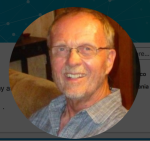Sunday June 14: Tony is our featured speaker for this hour in our on-going educational sessions. Enjoy Tony’s lecture, with slides, on the Solstices, the importance to ancient cultures, and the profound yet simple tools our ancestors used to align ceremonial sites to the heavens. Tony will show you how you can build our own Solstice Marker of any size, with a few simple items found easily around the house or your backyard.![]()
Saturday June 20- the Solstice begins: Celebration Postures live up to their name — it’s an ecstatic, joyful way to celebrate! Anytime today is the ideal time to lay your Solstice markers. Take photos to share!![]()
Sunday June 21: Tony joins us again in follow-up Q&A and discussion. Let’s see where your questions and observations take us! Share photos of your marker by holding up your phone to your Zoom camera. Tony has stories of his research into various archeo-astronomy sites, including New Mexico’s Chaco Canyon, and much more. ![]()
About the Solstices:
In the Northern Hemisphere, the June Solstice marks longest day of the year and the official start to summer, while for the Southern Hemisphere its the shortest day, marking the beginning of winter. The correct terms are now “June Solstice” and “December Solstice” to better include the other half of our globe. The equinoxes and solstices happens at the same moment around the world, no matter our location or time zone, as its based on our planet’s orbit around the Sun and tilt on the axis.
 |
Meet Tony Hull — Adjunct Professor of Physics and Astronomy at the University of New Mexico His fieldwork in archeo-astronomy led to his role as co-investigator of an extended archaeology research project in Chaco Canyon. He lectures widely on research design methods used by early cultures to accurately determine the cardinal directions. He designed and installed a 30-foot Gnomon Marker at the Cuyamungue Institute’s Dance Court and Labyrinth, with which to record the exact dates of the annual Equinoxes and Solstices, as well as the true East-West azimuth.
Watch Stonehenge Live Solstice Feed! One of the best known Solstice-marking temples,
